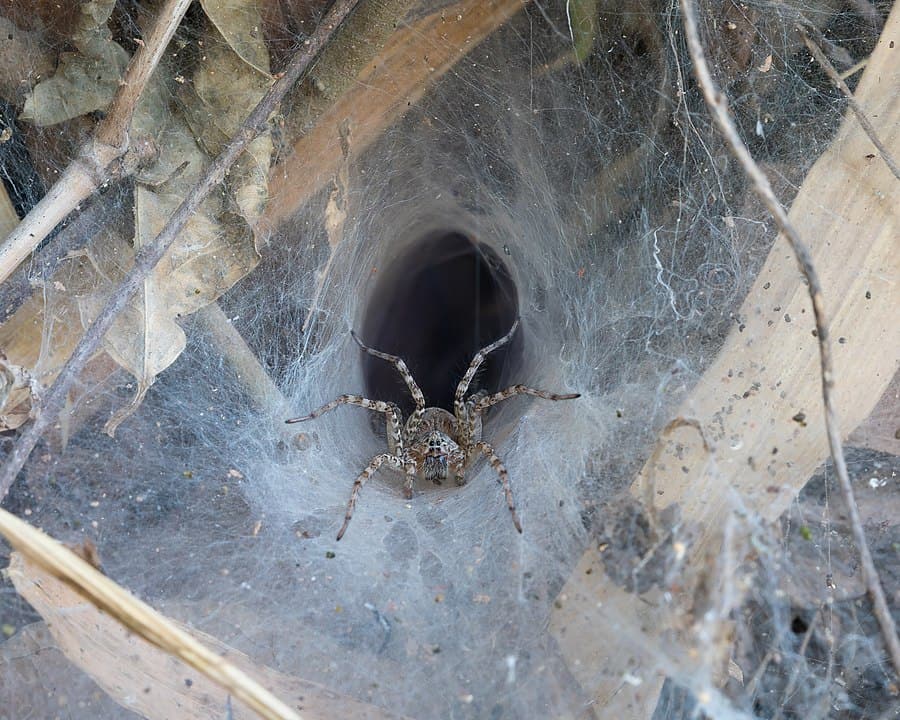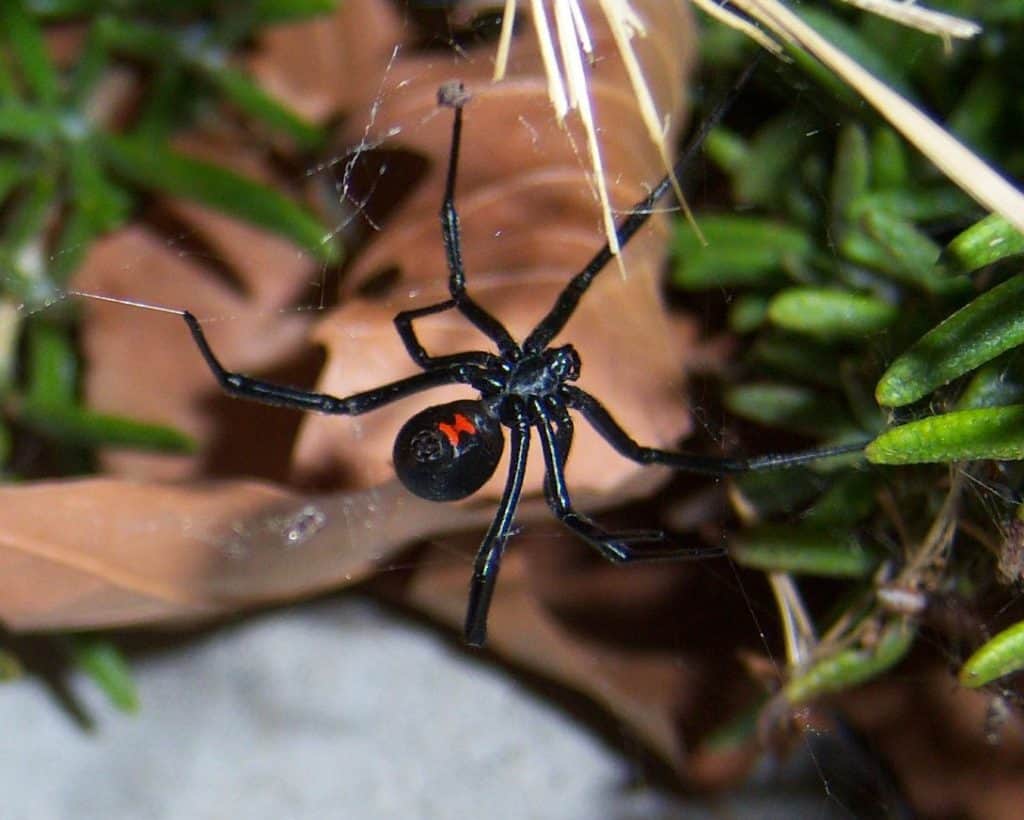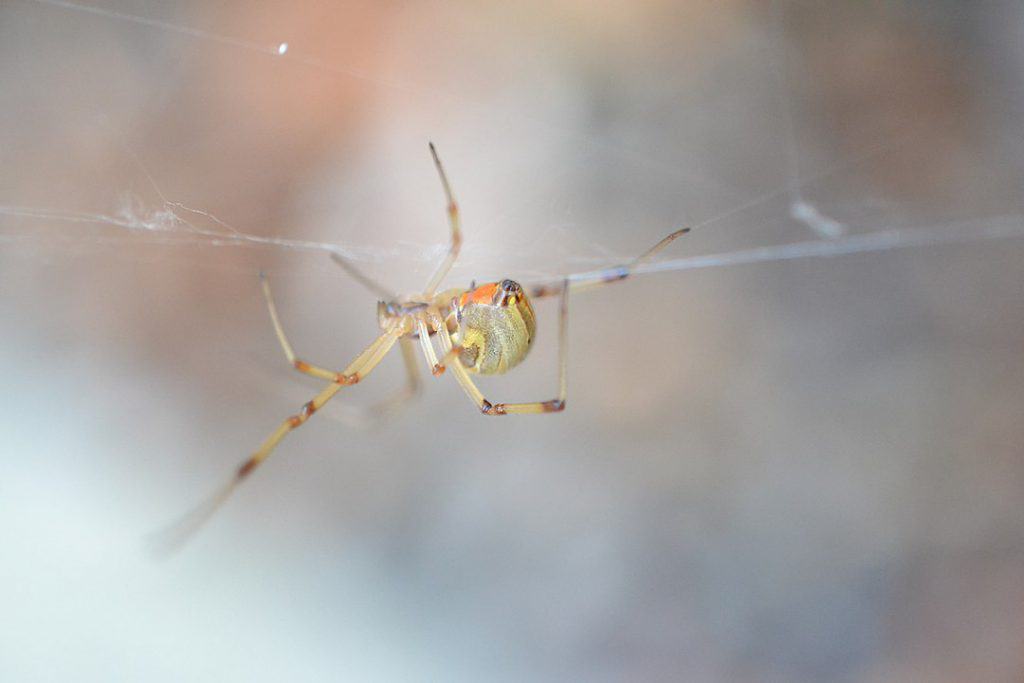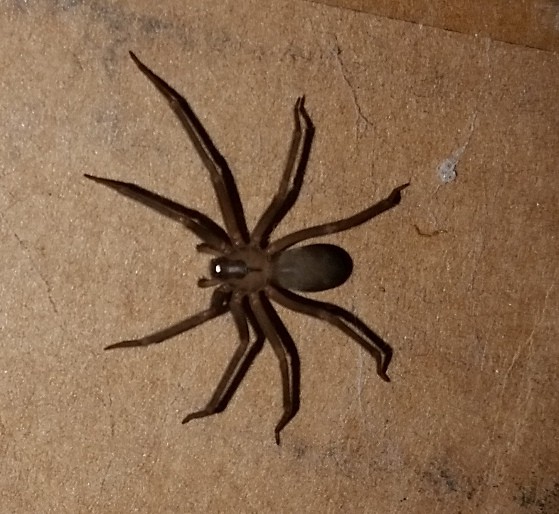
If you enjoy reading this article, why not check out our articles on What are the Biggest Bugs in America? and American Cockroach Facts!
Are all spiders poisonous?
Spiders are fascinating creatures. They are not insects (as those have six legs), but in fact are arachnids. They also are found Worldwide on every single continent except Antarctica (unless someone brings one in a terrarium to a research base for fun someday)! One common misunderstanding about spiders is people thinking they all are poisonous and this simply is not the case. While almost all spiders are venomous, their venom is not necessarily toxic to humans. This venom is oftentimes more like a digestive fluid spiders use where they bite their prey with their fangs and use the venom to liquefy the prey and eat it kind of like you would a smoothie. Venom should not be confused with the idea of spiders that are actually poisonous to humans however, as few spiders produce venom that is actually poisonous to a human being and can make us ill (or even kill us). In many cases a spider’s bite will really hurt and maybe cause some swelling, but the venom won’t hurt a human.
Therefore, only certain kinds of spiders actually are what could be considered poisonous and they are at times found in a varying assortment of places around the World or even in particular States. The kinds of spiders with venom that is poisonous to humans will now be talked about in regards to what States they are found in, with the list organized alphabetically by the name of the State. Keep in mind even if your State is not listed that does not mean it is spider-free, there maybe just are not any ones poisonous to humans often found in your State, although you should always practice caution with any spiders so as to avoid any pain from a bite–poisonous or not! Also, just to be fair to America’s neighbor to the North, Canada will be discussed at the end of our list as well!
Poisonous spiders by state
California

If you live in California or are visiting the State you need to be aware specifically of three kinds of spiders. There is the Western Black Widow and two types of Recluses–Desert Recluse and Chilean Recluse. The Western Black Widow (when female) is arguably the most dangerous spider found in the North American continent in regards to humans. Known for being dark black except for a distinctive red hourglass found on the lower part of their body (although it can be yellow or even white). Black Widows are generally about a half-inch big and contain a toxin that is potentially fatal to humans if they suffer a bite from a Western Black Widow. Death from a Western Black Widow bite is rare in a healthy human (not someone very young, very old, or ill) but it is still extremely painful. None of this warnings apply to male Western Black Widow Spiders which are smaller, brownish-orange and have no dangerous poison The reason female Black Widow Spiders are so dangerous and bigger actually has the answer in the name, “Black Widow.” The female actually often tries to kill and eat the male after they mate and this diet requires some really strong toxins to make sure he does not escape if she manages to bite him–clearly being a male Western Black Widow makes having any romance very dangerous!
The relationship between female and male spiders is very interesting. For example, did you know that not all male spiders spin webs? We have a whole article about it: Do Male Spiders Spin Webs?
“The Western Black Widow (when female) is arguably the most dangerous spider found in the North American continent. “
In regards to the Desert and Chilean Recluse spiders, they are not to be confused with the well-known Brown Recluse as even though it is found in a number of states the Brown Recluse is not in fact found in California. The Desert and Chilean Recluse spiders are brown-ish in color, but not Brown Recluses (it is admittedly a little confusing). These Recluse bites are very painful if you get them, and they at first do not look that severe but then being burning, itching, and otherwise feeling terrible. Recluse spiders tend to actually be very timid however (as the name, “Recluse,” would imply), so as long as you don’t mess with them and their webs in places they might nest (a corner of the garage, other less-trafficked area) they will generally have little desire to attack a human.
Colorado
Within the State of Colorado you may find Brown Recluse spiders, but they are generally quite rare, with the aforementioned bites of Recluse spiders being very painfully but rarely deadly. That said, the Brown Recluse is the most well-known of the Recluse spiders and its bite really hurts, so keep an eye out even if they are rare in Colorado, but with their fear of humans you do not need to worry too much. Now, the Hobo spider which can be found in Colorado and is often referred to as being like, “A highly aggressive house-spider,” is one to be extremely cautious in regards to! Their bites are not necessarily deadly, but can be super-painful and damage human flesh to the point a bite needs to be carefully monitored so that necrosis does not occur (necrosis is when the skin dies and rots away). Bites from the Hobo spider can take months to heal and these spiders do not hesitate to bite humans (hence that, “Aggressive,” tag applied to them). They are very common in Colorado, being a house spider to be very careful of as they are are not as timid as Recluse-type spiders.
Do note that the Western Black Widow spider can be found in Colorado too, and is relatively common, but as they are not as aggressive as the Hobos spider they are of course a spider to be wary of, but the Hobo spider is more of an immediate concern! One more spider found in Colorado that is poisonous to humans is the Yellow Sac Spider. Its bites can cause painful blisters/lesions which feel awful when touched but doctors do not think cause necrosis. These bites still need to be cared for though and attended to by doctors. One relatively alarming aspect of the Yellow Sac spider and its bites is that there is not a ton of medical sureness about how their bites can impact humans–it is evident it causes the lesions and they hurt, but how much long-term threat they pose is a mystery. There is a spider people are often very scared of but which you do not need to be as hesitant around as you think. Tarantulas are in fact found in Colorado, but despite looking very scary have bites that cause pain and irritation but they actually are lot less damage-causing than the Hobo spider (which is smaller and less notable in its appearance, but actually much more dangerous).
Florida

Within the State of Florida the biggest concerns in regards to spiders to be wary of are certain species of the Widow spider and certain kinds of Recluse. The Widow spiders to be on the look-out for in Florida are not the earlier-discussed Western Black Widow however. Within Florida the Widow species to look-out for are the Southern Black Widow, the Northern Black Widow, the Red Widow and the Brown Widow. The Southern Black Widow and Northern Black Widow have the well-known appearance of Black Widows discussed above (dark black with the red/white/orange hourglass) but a Red Widow and Brown Widow looks a bit different–and has a less dangerous but still poisonous and very painful bite. A Red Widow spider is red as its namesake indicates, with an abdomen that can be black and orange–it is very striking in its appearance and hard to miss! The Brown Widow spider has more of a brown body but will have the hints of orange seen often with Widow spiders as well. Again, while a Red Widow and Brown Widow may not be as dangerous as a Black Widow spider they do still pose a poisonous risk to humans with a very painful bite!
As for the Recluse spiders to be wary of, there is the Brown Recluse, Chilean Recluse, and the Mediterranean Recluse to be aware of. As with all kinds of Recluse spiders, they tend to avoid humans and be in out-of-the-way places so as long as you are aware of your surroundings you should not need to be too concerned about Recluse spiders. Between the Widow species and being careful about Recluse spiders as well those are the main concerns of Florida in regards to poisonous spider species.
Illinois
Within the State of Illinois there are two main poisonous spiders to make sure you are on-guard for. They are the common offenders of the Black Widow (an assortment of varieties) and the ever-so-prevalent Brown Recluse. The same warnings apply of avoiding out-of-the-way locations, being aware these kinds of spiders are generally timid, and that male Black Widows are actually mostly harmless but both male and female Brown Recluses should be looked-out for as they can cause immense pain and possible necrosis if bites are not properly cared for.
Michigan

Within Michigan the Northern Black Widow is a spider to be careful of and while Brown Recluse spiders have been spotted in the region they actually are not that common. The Brown Recluse is not indigenous to Michigan and those that do end up there often do not survive winters as temperatures below 40 degrees Fahrenheit are fatal to them. Considering how Brown Recluses often set-up their homes in areas that are not very well-heated (attics, basements, garages, and sheds) they do not survive those cold Michigan winters! It should be noted that there is another kind of spider found in Michigan, the Wolf spider, which is at times mistaken for being a Brown Recluse. The Wolf spider looks a bit like the Brown Recluse and is scared of humans as well, but unlike the Brown Recluse they do not make webs to catch prey, instead chasing them down like their namesake (wolves). Also Wolf spiders are not poisonous to humans so if they do bite you it will hurt to some degree, but not post nearly as much of a health-risk as if it were Brown Recluse that bites you. Wolf spiders tend to actually be a bit larger than a Brown Recluse spider and can be hairy much like tarantulas, making it a little ironic that Wolf spiders actually look more intimidating than Brown Recluse spiders despite being a good deal less dangerous.
“Wolf spiders actually look more intimidating than Brown Recluse spiders despite being a good deal less dangerous.”
Want to learn more about Wolf Spiders? Check out Where do Wolf Spiders Go in the Winter?
New York
New York has had occurrences where the Northern Black Widow and the Brown Recluse spiders have been spotted, but these incidents are rare. As has been established, these species prefer warmer climates and in the Fall and Winter the state of New York can be positively frigid. New York does have the presence of spiders that can stand the colder weather such as the above-discussed Wolf spider, but the only one with any poisonous qualities to be relatively aware of is the Yellow Sac spider which can result in the touched-upon issue of lesions/blisters and require medical supervision, but these spiders are generally minimally observed within New York State as well.
North Carolina
In the State of North Carolina only two kinds of spiders have been observed which are poisonous to humans. They are the Southern Black Widow and the Brown Recluse. As is becoming apparent, when it comes to poisonous spiders the ones that seem to pop-up a lot are forms of the Recluse and the Black Widow!
Texas
Texas is known for having a hot and temperate climate and for that reason this State has been found to have an abundant amount of–you guessed it–species of assorted Black Widows and that well-known timid-yet-dangerous troublemaker the Brown Recluse. These Black Widow species and the Brown Recluse are fond of hot temperatures and with Texas fitting that preference they can often be found there; this of course makes it very important to exercise extreme caution when entering into areas these spiders can be found such as garages, sheds, attics, basements, and other out-of-the-way places where the spiders can be in the heat.
Virginia
While the Brown Recluse spider is not at all common within the State of Virginia, they are sometimes found there. Much more common and also dangerous is the–you guessed it–Black Widow and its assorted species. As the refrain goes, exercise caution and just avoid these poisonous spiders and you should be safe.
Canada
While this article has mainly be focused on States where poisonous spiders can be found, it is only fair to talk about America’s neighbor to the North, Canada, as it has spiders too (remember, they can be found everywhere except Antarctica)! As Canada is so much father North and it gets very cold it is very rare to see a Brown Recluse or Yellow Sac Spider although they have, “Once in a blue moon,” been located within the Country. Seen a bit more often in Southern areas of the Country but still relatively rare are assorted species of the Black Widow spider. Seen a great deal more, but of course much less dangerous than other poisonous spiders is the Wolf spider. It is possible some of the occurrences where people thought they saw Brown Recluse spiders in Canada it was actually the more common Wolf spider–especially in regions to the far North–but in general it is just best to avoid a spider you suspect could be poisonous just to err on the side of caution, no matter how far North you are in Canada!
Poisonous Spiders by State:
| California | Western Black Widow, Desert Recluse, Chilean Recluse |
| Colorado | Brown Recluse, Hobo Spider, Western Black Widow, Yellow Sac Spider |
| Florida | Southern Black Widow, Northern Black Widow, Red Widow, Brown Widow, Brown Recluse, Chilean Recluse, Mediterranean Recluse |
| Illinois | Black Widow, Brown Recluse |
| Michigan | Northern Black Widow, Brown Recluse |
| New York | Northern Black Widow, Brown Recluse, Yellow Sac Spider |
| North Carolina | Southern Black Widow, Brown Recluse |
| Texas | Black Widow, Brown Recluse |
| Canada | Black Widow (very rarely Brown Recluse and Yellow Sac Spider) |
Now you’re a poisonous spider expert!
We have learned a lot in this article! It was established that while pretty much all spiders have venom they use to liquefy and eat their prey but a small number of certain kinds have powerful toxins that are poisonous to humans. These poisonous spiders found in America (and sometimes in Canada) are the species such as Black Widows, Recluses, Yellow Sac Spiders, and the Hobo spider and they are spread all around both countries! Sometimes the climate of an area is very conductive to the spiders–such as the hot weather in Texas–and other times you won’t find poisonous spiders that often somewhere due to the region being cold (Michigan has some frigid winters). Whether you are someplace with a great deal of spiders poisonous to humans or where they are a rare occurrence, it still is best to exercise caution around all spiders. After all, even a spider bite which is not poisonous to humans is going to hurt, and sometimes a spider that you think it relatively harmless could in fact be more dangerous than you suspect (such as if you confuse a Wolf spider with a Brown Recluse). Simply avoiding out-of-the-way spaces where some of these poisonous spiders can be found goes a long way to keeping yourself safe, and if you ever are bitten by a spider it is generally wise to seek medical attention just to be safe if you have the slightest suspicion the spider may be poisonous to humans. To summarize all of this, give spiders (poisonous and not-poisonous) their space and they generally will be more than happy to leave you alone as well and help eat pesky insects!
If you enjoyed reading this article, why not check out our articles on Do All Cockroaches Fly? Let’s Find Out! and How Fast Do Roaches Spread? Short Answers FAST!
Recent Posts
Tiny Black Bugs in Bathroom NO WINGS: What They Are and What to Do!
Finding tiny black bugs in your bathroom can be uncomfortable, to say the least. Especially if they are persistent, or they appear in very large numbers, which they often like to do. When it...
Tiny Black Bugs in Plant Soil - What Are They & What To Do About It
A short horror story: You get a new houseplant. You do your best to take care of it. You’ve ensured that it has the right soil, the right amount of sun, it gets enough water. And then one day, you...

